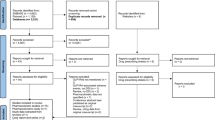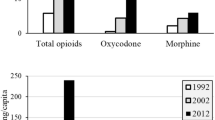Abstract
Purpose
To evaluate the impact of intestinal first-pass metabolism (Fg) by cytochrome P4503A (CYP3A) and uridine 5’-diphosphate-glucuronosyltransferases (UGT) on in vivo oral absorption of their substrate drugs.
Methods
CYP3A and UGT substrates were orally administered to portal-vein cannulated (PV) rats to evaluate their intestinal availability (Fa · Fg). In the case of CYP3A substrates, vehicle or 1-aminobenzotriazole (ABT), a potent inhibitor of CYP enzymes, was pretreated to assess Fg separately from Fa (Enzyme-inhibition method). On the other hand, since potent inhibitors of UGT have not been identified, Fg of UGT substrate was calculated from total amount of metabolites generated in enterocytes (Metabolite-distribution method).
Results
After oral administration of CYP3A substrates in ABT-pretreated rats, the portal and systemic plasma concentrations of the metabolite were nearly the same, indicating almost complete inhibition of intestinal CYP3A-mediated metabolism. Using Enzyme-inhibition method, Fg of midazolam (1 mg/kg) was calculated as 0.71. Additionally, total amount of raloxifene-6-glucuronide generated in enterocytes after oral administration of raloxifene was estimated using Metabolite-distribution method and Fg of raloxifene (0.98 μmol/kg) was calculated as 0.21.
Conclusions
PV rats enabled in vivo quantitative assessment of intestinal first-pass metabolism by CYP3A and UGT. This method is useful for clarifying the cause of low bioavailability.








Similar content being viewed by others
Abbreviations
- ABT:
-
1-Aminobenzotriazole
- ANT:
-
Antipyrine
- BUS:
-
Buspirone
- CYP:
-
Cytochrome P450
- D-FEL:
-
Dehydrofelodipine
- FEX:
-
Fexofenadine
- FEL:
-
Felodipine
- MDZ:
-
Midazolam
- 6-OH-BUS:
-
6-Hydroxybuspirone
- 1-OH-MDZ:
-
1-Hydroxy-midazolam
- 4-OH-MDZ:
-
4-Hydroxy-midazolam
- P-gp:
-
P-glycoprotein
- PV rats:
-
Portal vein-cannulated rats
- RLX:
-
Raloxifene
- R4’G:
-
Raloxifene-4’-glucuronide
- R6G:
-
Raloxifene-6-glucuronide
- UGT:
-
Uridine 5’-diphosphate –glucuronosyltransferase
References
Wilkinson GR. Drug metabolism and variability among patients in drug response. N Engl J Med. 2005;352:2211–21.
Watkins PB, Wrighton SA, Schuetz EG, Molowa DT, Guzelian PS. Identification of glucocorticoid-inducible cytochromes P-450 in the intestinal mucosa of rats and man. J Clin Invest. 1987;80:1029–36.
Paine MF, Hart HL, Ludington SS, Haining RL, Rettie AE, Zeldin DC. The human intestinal cytochrome P450 “pie”. Drug Metab Dispos. 2006;34:880–6.
Nishimuta H, Sato K, Yabuki M, Komuro S. Prediction of the intestinal first-pass metabolism of CYP3A and UGT substrates in humans from in vitro data. Drug Metab Pharmacokinet. 2011;26:592–601.
Williams JA, Hyland R, Jones BC, Smith DA, Hurst S, Goosen TC, et al. Drug-drug interactions for UDP-glucuronosyltransferase substrates: a pharmacokinetic explanation for typically observed low exposure (AUCi/AUC) ratios. Drug Metab Dispos. 2004;32:1201–8.
Mizuma T. Intestinal glucuronidation metabolism may have a greater impact on oral bioavailability than hepatic glucuronidation metabolism in humans: a study with raloxifene, substrate for UGT1A1, 1A8, 1A9, and 1A10. Int J Pharm. 2009;378:140–1.
Ogasawara A, Kume T, Kazama E. Effect of oral ketoconazole on intestinal first-pass effect of midazolam and fexofenadine in cynomolgus monkeys. Drug Metab Dispos. 2007;35:410–8.
Nishimuta H, Sato K, Mizuki Y, Yabuki M, Komuro S. Prediction of the intestinal first-pass metabolism of CYP3A substrates in humans using cynomolgus monkeys. Drug Metab Dispos. 2010;38:1967–75.
Matsuda Y, Konno Y, Hashimoto T, Nagai M, Taguchi T, Satsukawa M, et al. In vivo assessment of the impact of efflux transporter on oral drug absorption using portal vein-cannulated rats. Drug Metab Dispos. 2013;41:1514–21.
Strelevitz TJ, Foti RS, Fisher MB. In vivo use of the P450 inactivator 1-aminobenzotriazole in the rat: varied dosing route to elucidate gut and liver contributions to first-pass and systemic clearance. J Pharm Sci. 2006;95:1334–41.
Sun Q, Harper TW, Dierks EA, Zhang L, Chang S, Rodrigues AD, et al. 1-Aminobenzotriazole, a known cytochrome P450 inhibitor, is a substrate and inhibitor of N-acetyltransferase. Drug Metab Dispos. 2011;39:1674–9.
Mico BA, Federowicz DA, Ripple MG, Kerns W. In vivo inhibition of oxidative drug metabolism by, and acute toxicity of, 1-aminobenzotriazole (ABT). a tool for biochemical toxicology. Biochem Pharmacol. 1988;37:2515–9.
Meschter CL, Mico BA, Mortillo M, Feldman D, Garland WA, Riley JA, et al. A 13-week toxicologic and pathologic evaluation of prolonged cytochromes P450 inhibition by 1-aminobenzotriazole in male rats. Fundam Appl Toxicol. 1994;22:369–81.
Jeong EJ, Liu Y, Lin H, Hu M. Species and disposition model-dependent metabolism of raloxifene in gut and liver: role of UGT1A10. Drug Metab Dispos. 2005;33:785–94.
Jeong EJ, Lin H, Hu M. Disposition mechanisms of raloxifene in the human intestinal Caco-2 model. J Pharmacol Exp Ther. 2004;310:376–85.
Kosaka K, Sakai N, Endo Y, Fukuhara Y, Tsuda-Tsukimoto M, Ohtsuka T, et al. Impact of intestinal glucuronidation on the pharmacokinetics of raloxifene. Drug Metab Dispos. 2011;39:1495–502.
Matsuda Y, Konno Y, Satsukawa M, Kobayashi T, Takimoto Y, Morisaki K, et al. Assessment of intestinal availability of various drugs in the oral absorption process using portal vein-cannulated rats. Drug Metab Dispos. 2012;40:2231–8.
Takahashi M, Washio T, Suzuki N, Igeta K, Yamashita S. Investigation of the intestinal permeability and first-pass metabolism of drugs in cynomolgus monkeys using single-pass intestinal perfusion. Biol Pharm Bull. 2010;33:111–6.
Nozawa T, Imai T. Prediction of human intestinal absorption of the prodrug temocapril by in situ single-pass perfusion using rat intestine with modified hydrolase activity. Drug Metab Dispos. 2011;39:1263–9.
Benet LZ, Broccatelli F, Oprea TI. BDDCS applied to over 900 drugs. AAPS J. 2011;13:519–47.
Hoffman DJ, Seifert T, Borre A, Nellans HN. Method to estimate the rate and extent of intestinal absorption in conscious rats using an absorption probe and portal blood sampling. Pharm Res. 1995;12:889–94.
Cvetkovic M, Leake B, Fromm MF, Wilkinson GR, Kim RB. OATP and P-glycoprotein transporters mediate the cellular uptake and excretion of fexofenadine. Drug Metab Dispos. 1999;27:866–71.
Zhu M, Zhao W, Jimenez H, Zhang D, Yeola S, Dai R, et al. Cytochrome P450 3A-mediated metabolism of buspirone in human liver microsomes. Drug Metab Dispos. 2005;33:500–7.
Furukawa T, Nakamori F, Tetsuka K, Naritomi Y, Moriguchi H, Yamano K, et al. Quantitative prediction of intestinal glucuronidation of drugs in rats using in vitro metabolic clearance data. Drug Metab Pharmacokinet. 2012;27:171–80.
Yamashita S, Yoshida M, Taki Y, Sakane T, Nadai T. Kinetic analysis of the drug permeation process across the intestinal epithelium. Pharm Res. 1994;11:1646–51.
Paine MF, Khalighi M, Fisher JM, Shen DD, Kunze KL, Marsh CL, et al. Characterization of interintestinal and intraintestinal variations in human CYP3A-dependent metabolism. J Pharmacol Exp Ther. 1997;283:1552–62.
Paine MF, Shen DD, Kunze KL, Perkins JD, Marsh CL, McVicar JP, et al. First-pass metabolism of midazolam by the human intestine. Clin Pharmacol Ther. 1996;60:14–24.
Gertz M, Davis JD, Harrison A, Houston JB, Galetin A. Grapefruit juice-drug interaction studies as a method to assess the extent of intestinal availability: utility and limitations. Curr Drug Metab. 2008;9:785–95.
Yang J, Jamei M, Yeo KR, Tucker GT, Rostami-Hodjegan A. Prediction of intestinal first-pass drug metabolism. Curr Drug Metab. 2007;8:676–84.
Kadono K, Akabane T, Tabata K, Gato K, Terashita S, Teramura T. Quantitative prediction of intestinal metabolism in humans from a simplified intestinal availability model and empirical scaling factor. Drug Metab Dispos. 2010;38:1230–7.
Higashikawa F, Murakami T, Kaneda T, Kato A, Takano M. Dose-dependent intestinal and hepatic first-pass metabolism of midazolam, a cytochrome P450 3A substrate with differently modulated enzyme activity in rats. J Pharm Pharmacol. 1999;51:67–72.
Hirunpanich V, Murakoso K, Sato H. Inhibitory effect of docosahexaenoic acid (DHA) on the intestinal metabolism of midazolam: in vitro and in vivo studies in rats. Int J Pharm. 2008;351:133–43.
Petri N, Tannergren C, Rungstad D, Lennernäs H. Transport characteristics of fexofenadine in the Caco-2 cell model. Pharm Res. 2004;21:1398–404.
Gertz M, Harrison A, Houston JB, Galetin A. Prediction of human intestinal first-pass metabolism of 25 CYP3A substrates from in vitro clearance and permeability data. Drug Metab Dispos. 2010;38:1147–58.
Artursson P, Karlsson J. Correlation between oral drug absorption in humans and apparent drug permeability coefficients in human intestinal epithelial (Caco-2) cells. Biochem Biophys Res Commun. 1991;175:880–5.
Ohura K, Soejima T, Nogata R, Adachi Y, Ninomiya S, Imai T. Effect of intestinal first-pass hydrolysis on the oral bioavailability of an ester prodrug of fexofenadine. J Pharm Sci. 2012;101:3264–74.
ACKNOWLEDGMENTS & DISCLOSURES
We thank Kunihiko Morisaki (Charles River Laboratories Japan), Dr. Jiro Kuze (Taiho Pharmaceutical Co. Ltd.), and Dr. Toshiyuki Kume (Mitsubishi Tanabe Pharma Corporation) for useful discussions.
Author information
Authors and Affiliations
Corresponding author
Rights and permissions
About this article
Cite this article
Matsuda, Y., Konno, Y., Hashimoto, T. et al. Quantitative Assessment of Intestinal First-pass Metabolism of Oral Drugs Using Portal-vein Cannulated Rats. Pharm Res 32, 604–616 (2015). https://doi.org/10.1007/s11095-014-1489-x
Received:
Accepted:
Published:
Issue Date:
DOI: https://doi.org/10.1007/s11095-014-1489-x




